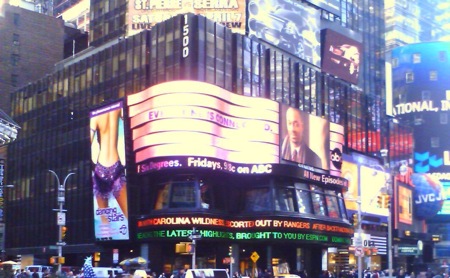
My multimedia composition process is best described by referring, again, to Wiebe and Dornsife, and their metaphor of “collage.” While Wiebe and Dornsife imply that “collage” as it is applied to college composition can still, in its earlier stages, exist in paper-bound formats, my “collages” tend to be mostly digitally-based, though, still, as Wiebe and Dornsife anticipate, containing significant amounts of traditional text. As Murray described prewriting as “everything that takes place before the first draft” and includes “daydreaming, note-taking and outlining, title-writing and lead-writing” (4), I see preproduction, in terms of multimediated compositions, largely in terms of collection. In some ways this subprocess is similar to Murray’s note-taking and outlining. When I begin a project that I know or anticipate will be multimediated, I start collecting two kinds of things: text and media (as will become clear in this description, I tend to rely on text as basis and support for most multimediations I create). Text collection follows, pretty much, the way I always generate pre-draft text in a non-multimediated project: I make lists, I write bits of paragraph text that come to me as I do what for me is probably more daydreaming than I would like, and consider as I somewhat languidly take a ‘”tour around the topic” discovering, in a kind of Aristotelian heuristic, what I already know about the issue, what I don’t know about the issue (usually phrased in questions) and what I assume I know. I find that dealing with the traditional text, for me, usually comes first, most probably because I learned to compose almost exclusively traditional texts for the first 30 years of my life (as I said earlier, I’m a digital immigrant). If the piece in process is a scholarly one, I follow a recursive process of writing short bits, researching, writing, and researching, and writing some more. I’m not much of an outliner; I’d rather generate, collect, generate, collect, and then sift through the collection, much as a mixed-media artist working with physical media may use “found objects” from an existing collection for a specific piece.
Where collection leaves the traditional, at least for me, is in the collection of these non-alphabetic, digital media. This, for me, is the point at which media begin to converge. I tend to work, throughout the entire process, in a “text, then media, text, then media” recursion. I find myself, in other words, looking for things that will “go” in what I am trying to compose—a strategy I would strongly guess is more or less typical of individuals who, like me, are, or have been, “text-primary.” But in collection, I am less project-bound than I am in when I generate text. I find myself collecting media in a kind of semi-serendipitous “gleaning” process as I go through my days, collecting digital images and clips (almost no sounds, as yet) that I may not need right then for the project under construction, but might need later, or which seems, for lack of a better word, “useworthy.” I take more advantage of visual opportunities. Indeed, I find that I am keeping a commonplace book of sorts of (mostly) digital images (which is still curious to me, because I rarely keep a commonplace book of traditional textual material. Digitally, then, as a medieval or renaissance scholar would keep a commonplace book in which to keep aphorisms, quotations, exercises, and ideas—remember, no photocopy machines or saving to the hard drive then-- find myself keeping a video/still image commonplace book with the camera on my cell phone. Below are two examples of such images: Image 1, below, was snapped in a Kansas hotel with the idea of using it, eventually, as a kind of “entrance’ to a mediated piece.
Image 2 is of one of the many scrolling marquee signs in and around New York’s Times Square; I was working on another article dealing with moving, scrolling word images, and i took the picture thinking that it could be used in the piece (it eventually wasn’t).
And Image 3 is simply a picture of ducks walking in front of my car.
I took the picture because I remember thinking that it was incongruous to see ducks in a Lubbock, Texas residential neighborhood; but the idea of ducks--for whatever reason--struck me, perhaps by the very randomness and incongruity of the image, the idea, and the ducks.
I have several digital commonplace books. I have the hard drive of my laptop computer; I have a decent camera on my cell phone, with which I can take advantage of picture or short video opportunities. I have a Blogger blog that used to be my ‘interesting stuff dumping ground. I have an 80GB external hard drive, as well as 32MB, 512 MB, and 2 GB flash drives on which I keep things. My digital commonplace books are now approaching a kind of structure that I am not sure I am really happy about: they’re Self-Storage spaces (I mean, of course they’re storage spaces, but I am wondering if these spaces will eventually look like my garage—a space in which it’s difficult to locate anything, and which is running out of available space anyway).


